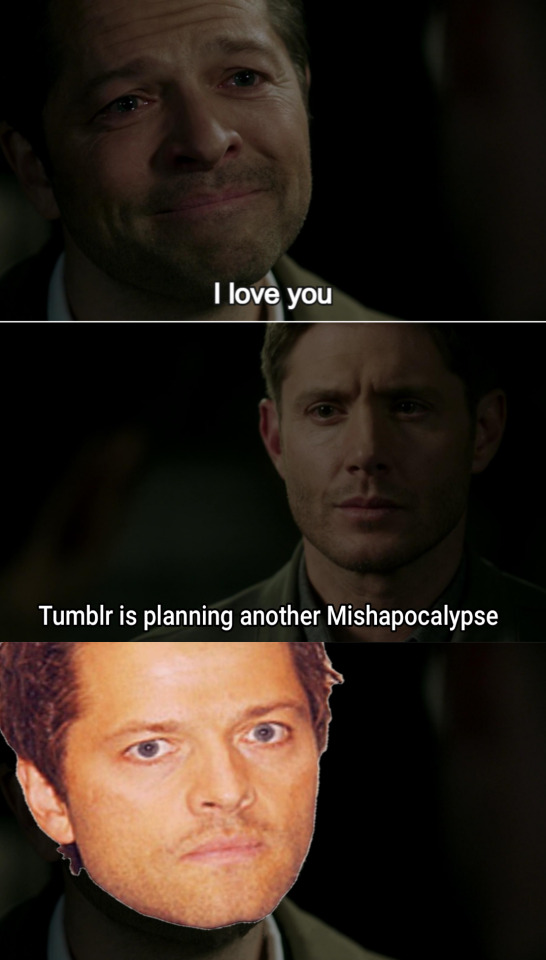#Histories and lore
Photo
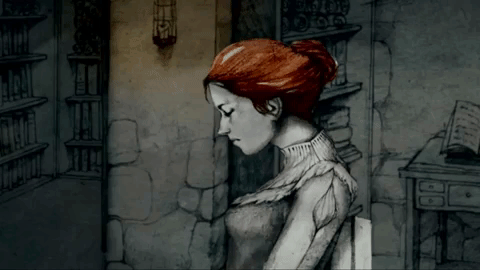



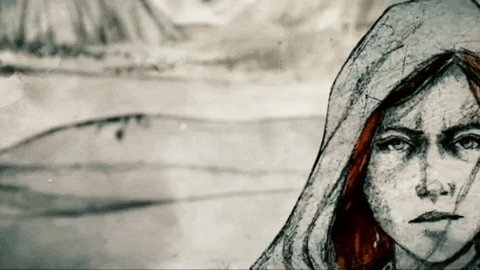
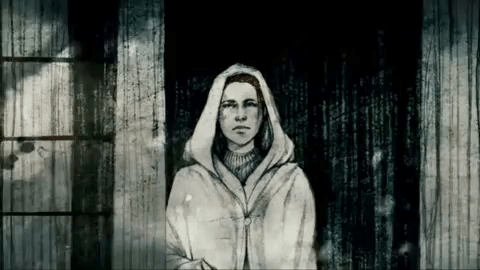

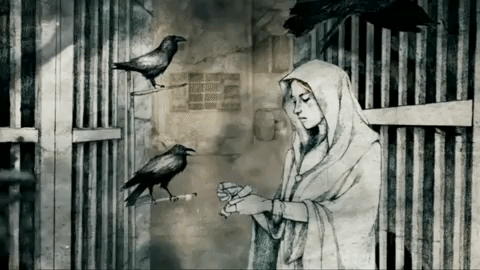
Sansa Stark Appreciation Month
Day 12 - Art: Sansa in “Histories and Lore - Northern Allegiances to House Stark”
#game of thrones#asoiaf#sansa stark#sansaappreciationmonth2022#sansamonth2022#art#histories and lore#animation
148 notes
·
View notes
Text
#Star Wars#Mass Effect#Transformers#Destiny#Halo#Star Trek#science-fiction#lore#history#public opinion#Star Wars: Knights of The Old Republic#Mass Effect 2#Transformers: The Covenant of Primus#Destiny 2#Halo: Combat Evolved#Star Trek: Enterprise#Star Wars: The Old Republic#Mass Effect 3#Transformers: Generation 1#Halo 2#Star Trek: Voyager#Star Wars: The Clone Wars#Destiny: The Taken King#Transformers 2007#Halo 3#Star Trek: The Next Generation#Star Wars: Plagueis#Transformers: Exodus#Destiny 2: The Witch Queen#Halo Reach
9K notes
·
View notes
Text
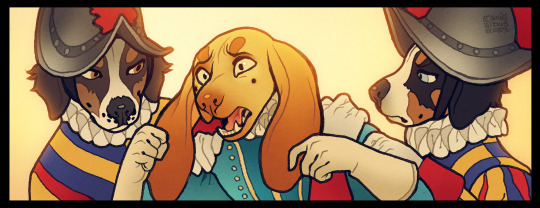
What if I told you that RoobrickMarine went and wrote an entire novella starring my 16th century dog couple? It's very canon-adjacent, well researched and thoughtfully put together, has inspired me a ton during these past months and it's now publicly available at AO3. I highly recommend it.
✦ Separation ✦

#content warnings for sex violence self harm and general angst#six chapters 41K words#people who have asked for longer stories of these two please give this one a look#I've watched this unfold since late may? early july? and it's been an exciting experience#I'm not a writer I think it's better than what I could've come up with#honestly though the way he managed to get inside Machete's and Vasco's heads was uncanny their mannerisms and thought processes are spot on#some of the events aren't canon but they might as well be#and most of the background details and backstory tidbits are accurate believe me he's very well versed on their lore#big history nerd so the worldbuilding is intense#you get to meet the dog pope#there's saint sebastian#roommate hijinks#it gets kind of bleak at times though so be mindful of that#it's not all fluff and good feelings#Separation#Heinaven#RoobrickMarine#own characters#own art#artists on tumblr#CanisAlbus#Vasco#Machete#anthro#sighthound#dogs#canine#animals#if you end up reading the whole thing it would be really sweet if you left a little comment as a thanks for his hard work
6K notes
·
View notes
Text
Emerald Spectacles from India, c. 1620-1660 CE: the lenses of these spectacles were cut from a single 300-carat emerald, and it was believed that they possessed mystical properties

These eyeglasses are also known by the name "Astaneh-e ferdaws," meaning "Gate of Paradise," based on the symbolic associations between the color green and the concept of spiritual salvation/Paradise. That symbolism (which is rooted in Islamic tradition) was especially popular in Mughal-era India, where the spectacles were made.
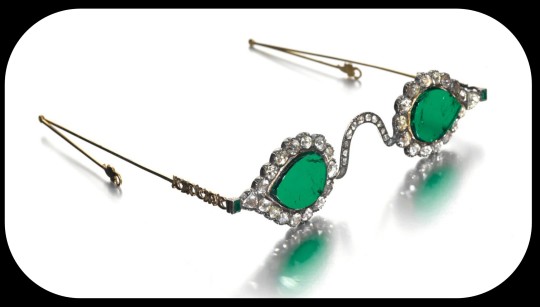
The lenses were crafted from two thin slices of the same emerald. Together, the lenses have a combined weight of about 27 carats, but given the precision, size, and shape of each lens, experts believe that the original emerald likely weighed in excess of 300 carats (more than sixty grams) before it was cleaved down in order to produce the lenses. The emerald was sourced from a mine in Muzo, Colombia, and it was then transported across the Atlantic by Spanish or Portuguese merchants.
Each lens is encircled by a series of rose-cut diamonds, which run along an ornate frame made of gold and silver. The diamond-studded frame was added in the 1890s, when the original prince-nez design was fitted with more modern frames.
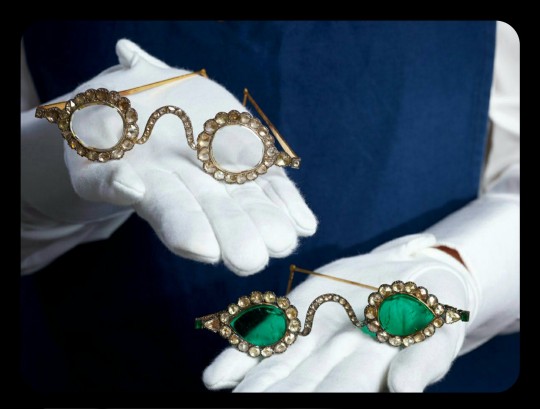
The emerald eyeglasses have long been paired with a second set of spectacles, and they were almost certainly commissioned by the same patron. This second pair is known as "Halqeh-e nur," or the "Halo of Light."
The Halo of Light features lenses that were made from slices of diamond. The diamond lenses were cleaved from a single stone, just like the emerald lenses, with the diamond itself being sourced from a mine in Southern India. It's estimated that the original, uncut diamond would have weighed about 200-300 carats, which would make it one of the largest uncut diamonds ever found.

The lenses are so clear and so smoothly cut that it sometimes looks like they're not even there.
Both sets of spectacles date back to the mid-1600s, and it's generally believed that they were commissioned by a Mughal emperor or prince. The identity of that person is still a bit of a mystery, but it has been widely speculated that the patron was Shah Jahan -- the Mughal ruler who famously commissioned the Taj Mahal after the death of his wife, Mumtaz Mahal. Shah Jahan did rule as the Mughal emperor from about 1628 to 1658.
The emerald and diamond lenses may have been chosen for symbolic, sentimental, and/or cultural reasons, or they may have been chosen simply because they're pretty and extravagant; the original meaning and purpose behind the design is still unclear. Experts do believe that the eyeglasses were designed to be worn by someone, though.
At times, it was believed that the spectacles had spiritual properties, like the ability to promote healing, to ward off evil, to impart wisdom, and to bring the wearer closer to enlightenment. Those beliefs are largely based on the spiritual significance that emeralds and diamonds can have within certain Indic and Islamic traditions -- emeralds may be viewed as an emblem of Paradise, salvation, healing, cleansing, and eternal life, while diamonds are similarly associated with enlightenment, wisdom, celestial light, and mysticism.
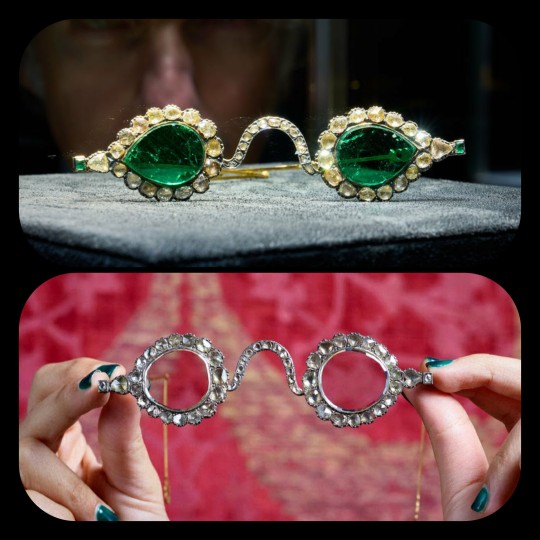
The Gate of Paradise and the Halo of Light were both kept in the collections of a wealthy Indian family until 1980, when they were sold to private collectors, and they were then put up for auction once again in 2021. They were most recently valued at about $2 million to $3.4 million per pair.
Sources & More Info:
Sotheby's: Mughal Spectacles
Architectural Digest of India: At Sotheby's auction, Mughal-era eyeglasses made of diamond and emerald create a stir
Only Natural Diamonds: Auspicious Sight & the Halqeh-e Nur Spectacles
The Royal Society Publishing: Cleaving the Halqeh-Ye Nur Diamonds
Gemological Institution of America: Two Antique Mughal Spectacles with Gemstone Lenses
Manuscript: From Satan's Crown to the Holy Grail: emeralds in myth, magic, and history
CNN: The $3.5 million Spectacles Said to Ward off Evil
BBC: Rare Mughal Era Spectacles to be Auctioned by Sotheby's
#history#archaeology#artifact#mughal#india#17th century#art#emerald#diamond#glasses#indian lore#islam#religion#mysticism#indian history#anthropology#spirituality#fashion
4K notes
·
View notes
Text


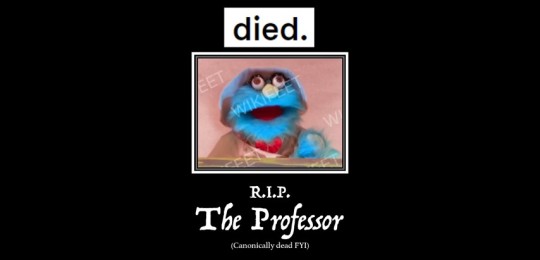
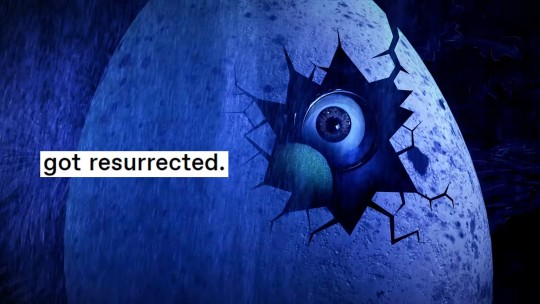

#watcher#watcher entertainment#puppet history#the professor#ryan and shane#shane and ryan#all hail the watcher#shane madej#ryan bergara#ryan beef boy bergara#beef boy#puppet history the professor#puppet history meme#puppet history lore#puppet history season 5#puppet history finale#we are watcher#puppet history s5#the professor lives#the professor puppet history#the professor meme#watcher memes#watcher entertainment memes#marko's edits
9K notes
·
View notes
Text
sonic who's a bit older and a bit more mentally tired than he used to be. who's finally had some time to understand the weight of the things he does and foes he faces, who's beginning to realize the kind of shit he battles and the powers he messes with, but who actively tries not to think about it too hard. who keeps up the smile even when he's not fully feeling it that day, who's much more quiet when he's by himself than he used to be. whose appreciation of his friends grows with every passing day, who believes in them even more than he used to to the point he doesn't need to fear death (if he even did in the first place); if the world is in their hands after his passing, things will turn out alright
#soda offers you a can#lore drabbles#sonic#he seems like the kind of guy who calms down as he ages#he's got the energy of someone who turns into a cool uncle with rich history and a glimmer in his eye#edit: can i stop typoing all the time im so tireddd
2K notes
·
View notes
Text
carlos's radio message of “ gap to lando every lap" and carlos intentionally slowing down just enough to keep lando within drs range , lando understanding the signal. when told by his race engineer about the gap (0.8) carlos goes like “ it's on purpose ”. do you understand how much coordination, trust and intimacy you have to have with THAT driver to have that amount of telepathy with? like. nobody apart from CarLando could pull that off. i repeat, nobody else.
#carlando lore#very important and critical carlando lore#lore for the carlando history textbooks#more “ friends ” with lando statement makes better sense now...#they just know each other so well I'm going tk be sick#insane behaviour#carlos sainz jr#lando norris#carlando#formula 1#singapore gp 2023#stella's textposts
2K notes
·
View notes
Note
I’m suddenly getting swathes of Lancer hate across my feed… Has something happened in the fandom? “Union is ______ how could they paint them as even remotely good. They allow _____, and I hate the devs they are ______. The whole thing is just 40k with communist veneer”.
Like am I taking crazy pills…? I thought that all of the problems were literally like right there on the tin “we are a utopia in progress! We will obtain it by any means possible even if it means being everything we say we are not/fighting against. As the player you decide what is right. How much will you ignore for someone else’s idea of utopia?” Like doesn’t it mean all the tools to actually change are there and that is the HOPE aspect of all of this?
(Sorry if this in incoherent grammar is a weak point and I pulled something in my back simply standing up. Now I am sad and crook backed in spasmodic pain)
This isn't an argument I feel super enthusiastic about stepping into, because it gets the most annoying sort of people in your mentions eager to maliciously misrepresent what you say.
However, yeah, there are some pretty terrible readings of Union floating around. I'd invoke "media literacy" because think that a lot of this comes from people not really holistically engaging with the fictional future history of Lancer, but also from a sort of dogmatic purism that requires future societies to be flawless, else they're irredeemable.
It is important to note that ThirdComm is the direct descendant of two highly imperfect societies. FirstComm was formed as a response to the Three Great Traumas of discovering the Massif Vaults (and thus that they were the inheritors of a fallen world), the wars over the Massif Vaults, and the discovery of the lost colonies, all of which collectively showed humanity how close it had come to total extinction.
FirstComm decided that it had a responsibility to ensure that humanity never risked extinction again. It manifested this by trying to colonize every habitable planet it could find, pumping out ship after ship to seed the cosmos with as much human life as it possibly could. This led to problems when it encountered civilizations like the Karrakin Federation and the Aun, who had been carrying humanity's torch just fine by themselves, thank you very much.
SecComm was an Anthrochauvinist fascist state. The book defines it thusly:
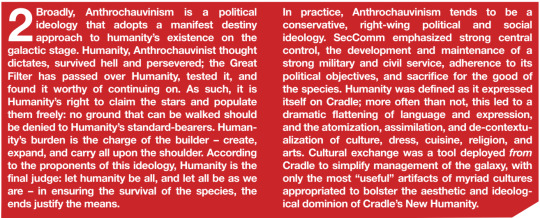
We can see a lot of Anthrochauvinist historical romanticism in the mech naming schemes of Harrison Armory, SSC and IPS-N - the fact that Harrison Armory names its mechs after great military leaders of pre-Fall Earth history, IPS-N does the same with naval figures, and SSC uses the names of Earth animals. Even the GMS Everest is named for a mountain on Earth. It's very Cradle-centric.
Anthrochauvinism was, to be clear, largely just an excuse for colonialism and hegemony. Atrocities could easily be justified under by stating that whoever they're being committed against were a threat to the Continuance of Humanity - a term that SecComm got to define.
It's also at this point that we have to zoom in from broad sociopolitical points to address one very specific piece of history: the New Prosperity Agreement. This was signed to prevent the outbreak of a Second Union-Karrakin War, and mandated that the Karrakin Houses would maintain privileged levels of autonomy within Union, and that they would be granted colonial rights to the entire Dawnline Shore. This agreement, struck in 3007u, basically defines much of the current political situation today.
ThirdComm was a final and inevitable reaction to the atrocities, abuses and excesses of SecComm. The unspeakable horrors of Hercynia were the spark, but I need to stress how little Hercynia actually mattered in the larger Revolution - at the start of NRfaW, it's explicitly stated that almost nobody in the galaxy even knows where it is, let alone what happened there. The Revolution was a generalized response to SecComm's tyranny, with no single rallying cry.
The Revolution might also have failed entirely, but for a critical error by Harrison Armory: pissing off the Karrakin Trade Baronies. After getting kicked off Cradle, the Anthrochauvinist Party organised a fleet at Ras Shamra to try and retake Cradle. Simultaneously, however, they were attempting to secure protectorate agreements to steal worlds in the Dawnline Shore out from under the KTB. Putting these two together and making five, the KTB assumed that the fleet was pointed at Karrakis, and started the First Interest War.
The First Interest War initially favoured the KTB. They smashed the fleet above Ras Shamra and simultaneously conquered the moon of Creighton in the Dawnline Shore. However, they underestimated just how ruthless Harrison I was - he "retook" Creighton by relativistic bombardment, and then conquered four of the 12 worlds of the Dawnline Shore with mechanised chassis, a technology the KTB had not adopted and had no counter for.
To prevent further loss of life, Union was eventually forced to broker a peace agreement that saw Harrison I handing himself over to Union justice in return for Harrison Armory's continued sovereignty, and the KTB joining Union as a full member state.
So, with that historical context out of the way, let me get to the second part of this absurd essay I'm writing.
Third Committee Union isn't a civilization that arose from whole cloth. It's shaped by five thousand years of Union history, six thousand years of post-Fall history, and six thousand years of pre-Fall history before that. It is, ultimately, an extremely well-thought-out and well-worldbuilt fictional polity, in that all of its imperfections come from traceable root causes in its history.
Why does ThirdComm permit the abuses of the KTB? Because to stop them, it would likely have to go to war, and such a war would butcher billions. Worse, to do so, it would probably have to ally with Harrison Armory and make horrific concessions.
Why does ThirdComm permit the expansionism and cryptochauvinism of the Armory? Because to stop them, it would likely have to go to war, and such a war would butcher billions. Worse, to do so, it would probably have to ally with the KTB and make horrific concessions.
Nobody in CentComm likes that Harrison Armory are empire-building expansionists. Nobody in CentComm likes that the KTB has a hereditary nobility and enforces blockades against planets that rebel against it. The problem is that ThirdComm is, in historical terms, still relatively new. They've been around five hundred years, and compared to the 1600 years that SecComm was around and the 2800 years FirstComm existed for, that's not very much.
ThirdComm is attempting to decouple itself from the Cradle-first politics of its predecessor, and to amend the many, many atrocities committed in the name of Humanity. It is not easy to do any of these things. SecComm was defined almost entirely by the fact that if it didn't like what you were doing, it would send in the military as a first response. Every time ThirdComm chooses to do the same, its legitimacy erodes, because the mission of ThirdComm is to prove that diverse, vibrant and compassionate human civilization can exist without devolving into war and bloodshed. ThirdComm always tries diplomacy as a first response because if it doesn't, millions of people could die.
500 notes
·
View notes
Text
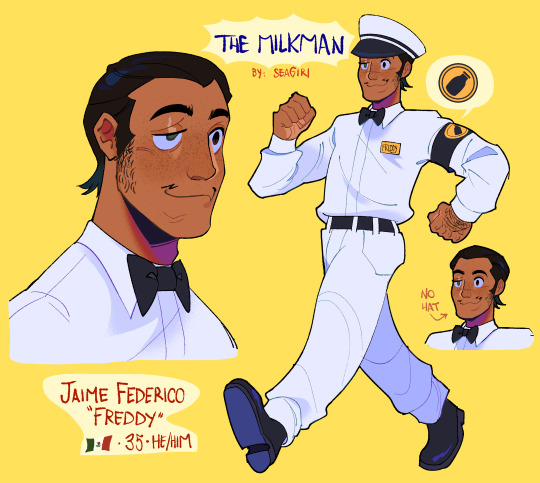

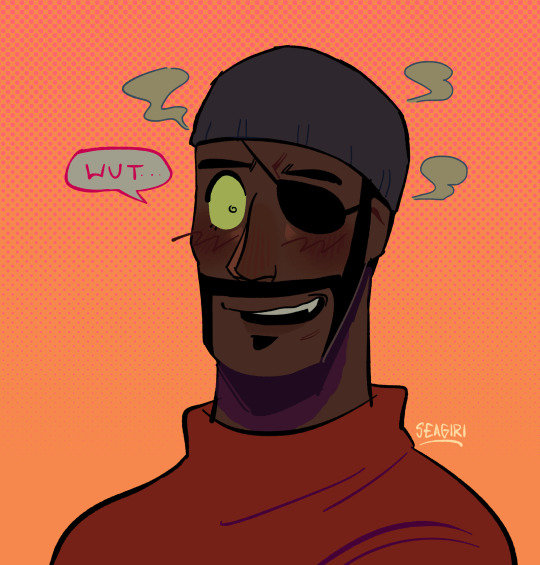
i made myself a tf2 oc to ship with demo. say hi to jaimito.
hes a milkman hired by tf industries to deliver imported milk specifically to the red/blu base because local milk is radioactive (he has his own logo!! hes important)
#not tagging much because i dont want people to cringe at my silly oc#my art#tf2#tf2 oc#oc x canon#demoman#my ocs#the milkman#idk about tf2 lore#his lore is based off mexican history. hes based off actors from the golden age of mexican cinema#idk what their ship name is maybe some shit like lactose intolerance
2K notes
·
View notes
Note
Puppet history..has lore? I’ve just started watching and Theres lore?

#if my memory is correct there’s not much if any lore in the first season and it’s only subtle in the second#it starts to pick up in the third i think and there’s A Lot of lore is season four#Even More in season five#the lore is linear#someone please correct me if i’m wrong lol#if shane madej has his hands on it there’s gonna be deep intricate lore in it somewhere#it kinda came out of nowhere and everyone was like ?? but we rolled w it and got invested lol#watcher#puppet history#bergasks
5K notes
·
View notes
Text
Game Theory made a series on Welcome to Night Vale lore, and made a timeline of Night Vale history while also using the books. It was one of the first series Matpat ever did on his channel before abandoning it when his channel grew bigger and now he’s revisiting it. Using the classic editing and intro.
533 notes
·
View notes
Text


don’t like the sound of that
#HMMMMM UNSUPERVISED YOU SAY#hope this doesn’t awaken any evil puppet/complex lore#puppet history#watcher
1K notes
·
View notes
Text
The Architecture of Rain World: Layers of History
A major theme in Rain World's world design that often goes overlooked is the theme of, as James Primate, the level designer, composer and writer calls it, "Layers of History." This is about how the places in the game feel lived-in, and as though they have been built over each other. Here's what he said on the matter as far back as 2014!

The best example of this is Subterranean, the final area of the base game and a climax of the theme. Subterranean is pretty cleanly slpit vertically, there's the modern subway built over the ancient ruins, which are themselves built over the primordial ruins of the depths. Piercing through these layers is Filtration System, a high tech intrusion that cuts through the ground and visibly drills through the ceiling of the depths.
Two Sprouts, Twelve Brackets, the friendly local ghost, tells the player of the "bones of forgotten civilisations, heaped like so many sticks," highlighting this theme of layering as one of the first impressions the player gets of Subterranean. Barely minutes later, the player enters the room SB_H02, where the modern train lines crumble away into a cavern filled with older ruins, which themselves are invaded by the head machines seen prior in outskirts and farm arrays, some of which appear to have been installed destructively into the ruins, some breaking through floors.
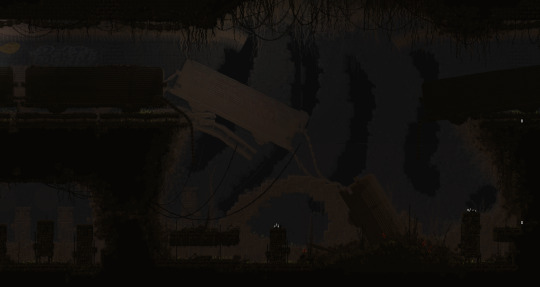
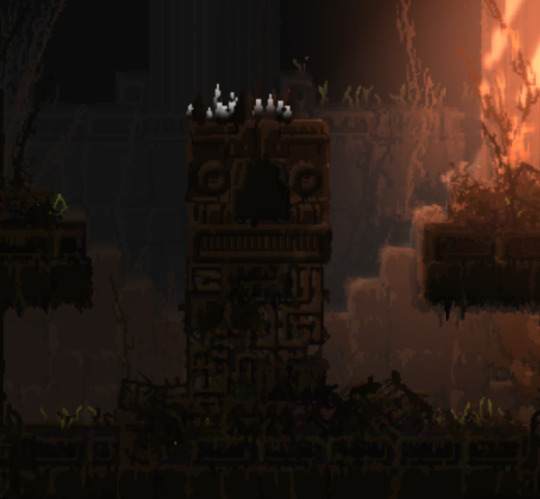
These layers flow into each other, highlighting each other's decrepit state.
The filtration system, most likely the latest "layer," is always set apart from the spaces around it. At its top, the train tunnels give way to a vast chasm, where filtration system stands as a tower over the trains, while at the bottom in depths, it penetrates the ceiling of the temple, a destructive presence. (it's also a parallel to the way the leg does something similar in memory crypts, subterranean is full of callbacks like that!)


Filtration system is an interesting kind of transition, in that it is much later and more advanced than both of the areas it cuts between. This is a really interesting choice from James! It would be more "natural" to transition smoothly from the caves of upper subterranean to the depths, but by putting filtration system in between, the two are clearly demarcated as separate. The difference in era becomes palpable, the player has truly found something different and strange.
Depths itself is, obviously, the oldest layer not only of subterranean but of the game itself. The architecture of Depths has little to do with the rest of the game around it, it's a clear sign of the forgotten civilisations that our friend Two Sprouts, Twelve Brackets showed us, there's not actually that much to say about it itself, it's mostly about how it interacts with the other layers of subterranean.
That said, Subterranean is far from the only case of the theme of layers of history. It's present as soon as the player starts the game!
The very first room of the game, SU_C04, is seemingly a cave. It is below the surface, the shapes of it are distinctly amorphous rather than geometric. (well. kind of, it doesn't do a very good job of hiding the tile grid with its 45 degree angles.)

But let's take a closer look, shall we?

See that ground? it's made of bricks. The entire cave area of outskirts is characterised by this, the "chaotic stone" masonry asset is mixed with brickwork, unlike the surface ruins which are mostly stone. This, seemingly, is an inversion of common sense! The caves are bricks and the buildings are stone. This is not, however, a strange and unique aspect but a recurring motif.
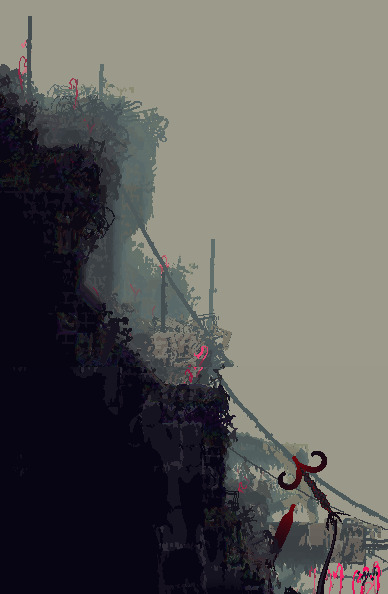
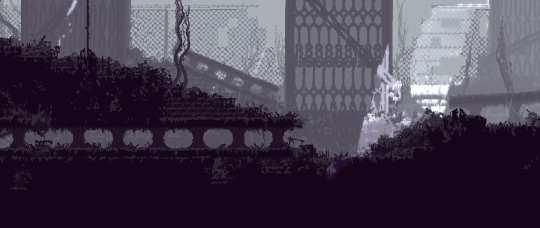
This occurs enough in the game for it to be clearly intentional, but why would materials such as bricks be used in otherwise natural looking terrain?
The answer lies in the "Layers of History" theme. This is in fact, something that happens in real life, and it's called a tell
To be specific, a tell is a kind of mound formed by settlements building over the ruins of previous iterations of themselves. Centuries of rubble and detritus form until a hill grows from the city. Cities such as Troy and Jericho are famous examples. The connections to the layers of history theme are pretty clear here, I think. Cities growing, then dying, then becoming the bedrock of the next city. The ground, then, is made of bricks, because the ground is the rubble of past buildings. The bones of forgotten civilisations, heaped like so many sticks!
#rain world#rainworld#rain world lore#rainworld lore#rw lore#rw#subterranean my beloved#thank you to videocult for making the first survival game themed around stratigraphy and new york city rats#i would've gone on for another paragraph about how OE relates to this but like.#that's dlc stuff#and i still think of the dlc stuff as modded content lol#better to keep it separate#also this analysis is not comprehensive! the layers of history stuff is common throughout#there's farm arrays there's the relationship between shaded citadel and five pebbles there's the stuff buried under garbage wastes#so much more#unfortunately i do not have much energy lol
498 notes
·
View notes
Text
I don’t think ill ever fully understand The Secret History like Donna Tartt spent TEN YEARS writing it and some of the nods to literature , poems and mythology that are referenced probably went right over my head and others as well.Theres so much we probably don’t understand about the book like i need to fully understand it but i don’t think anyone will except for Donna Tartt
#the secret history#francis abernathy#richard papen#charles macaulay#henry winter#all i can think about is the secret history#donna tartt#bunny corcoran#judy poovey#the amount of lore involved in this book
362 notes
·
View notes
Text
Hey horse people, I'd love to hear your input on something:
I think Vasco's personal/favorite horse would be a dapple grey Andalusian. My equine knowledge is embarrassinly limited, but I believe they were held in very high regard among early modern European nobility, the real fancy-pants option you could say. Does that sound like a believable choice?
Is there a significant practical difference between mares, geldings and stallions? I know stallions were favored as war and tournament horses (the term for these is destrier I believe, think of medieval knights on horseback), but if we're talking about a horse you use mostly for riding, travel and hunting (these were called palfreys), would a gelding or a mare be preferred?
And from a historical point of view, if you were a wealthy noble that didn't do much fighting, would you still own a prestigious destrier horse just for showing off? Even if a palfrey was better suited for your needs? Not that it matters, I'm just trying to piece stuff together.
I've been trying to come up with a name for Vasco's horse, any suggestions?
#mostly just thinking out loud feel free to ignore#or if you have other horse ownership/horse history tips I'd appreciate those as well#Vasco#Vaschete lore
676 notes
·
View notes
